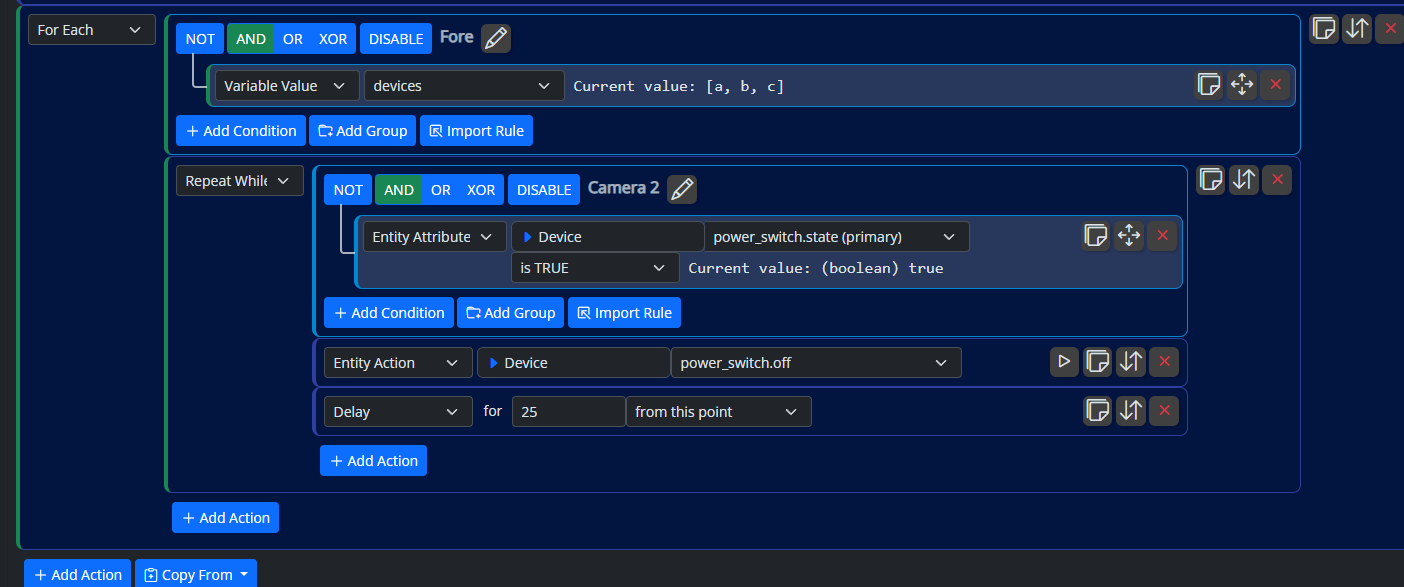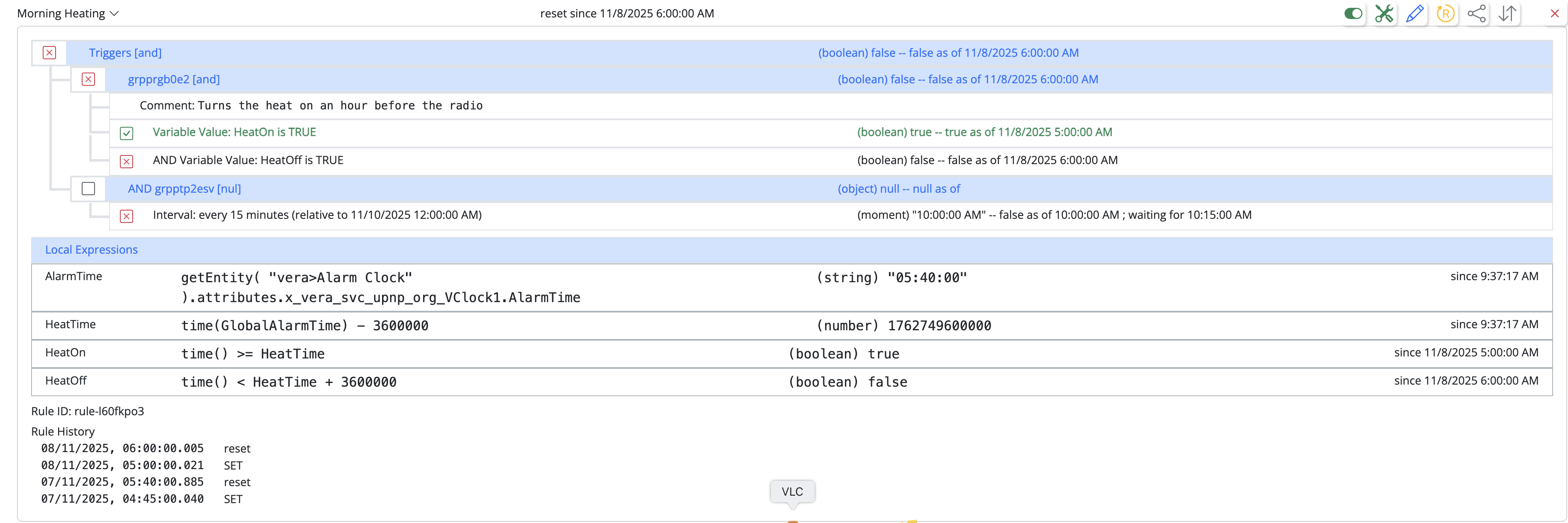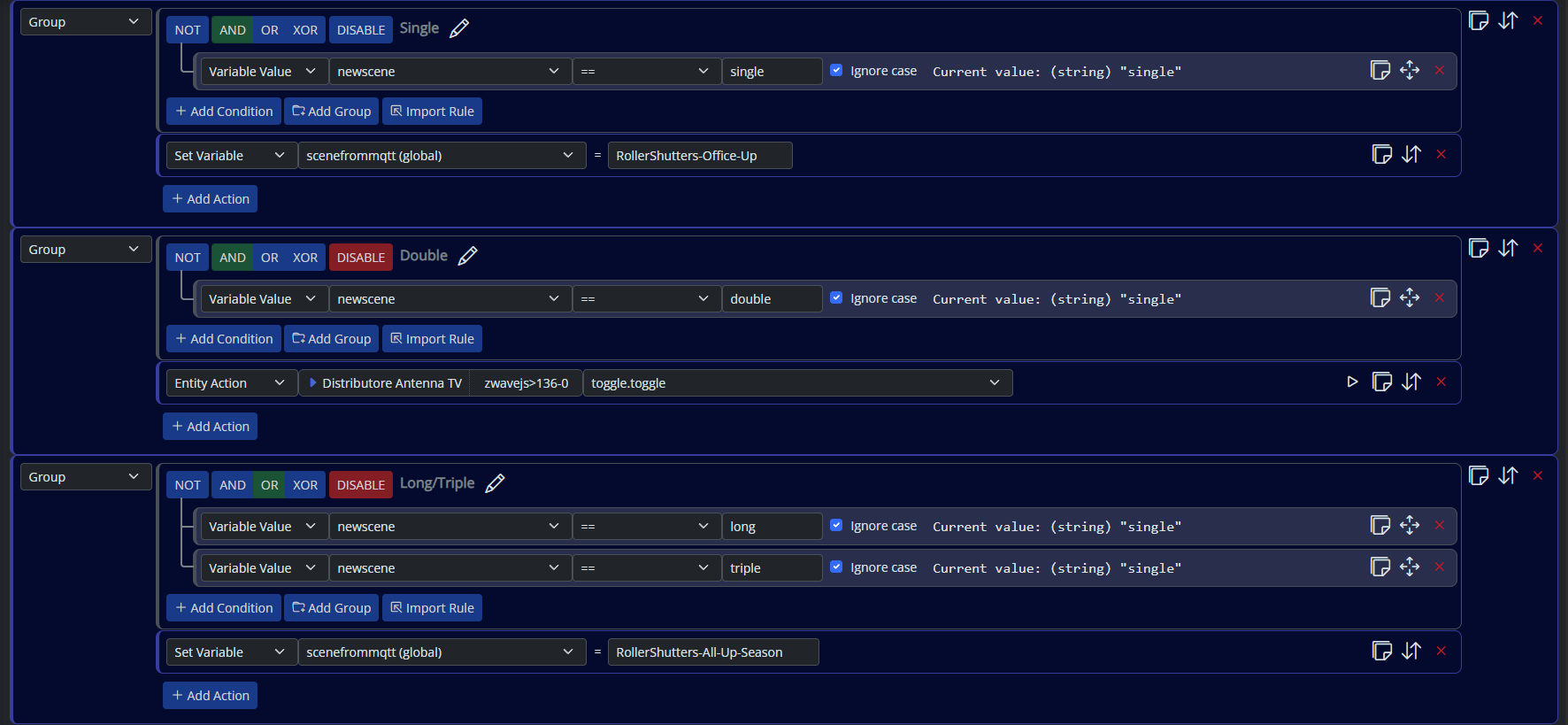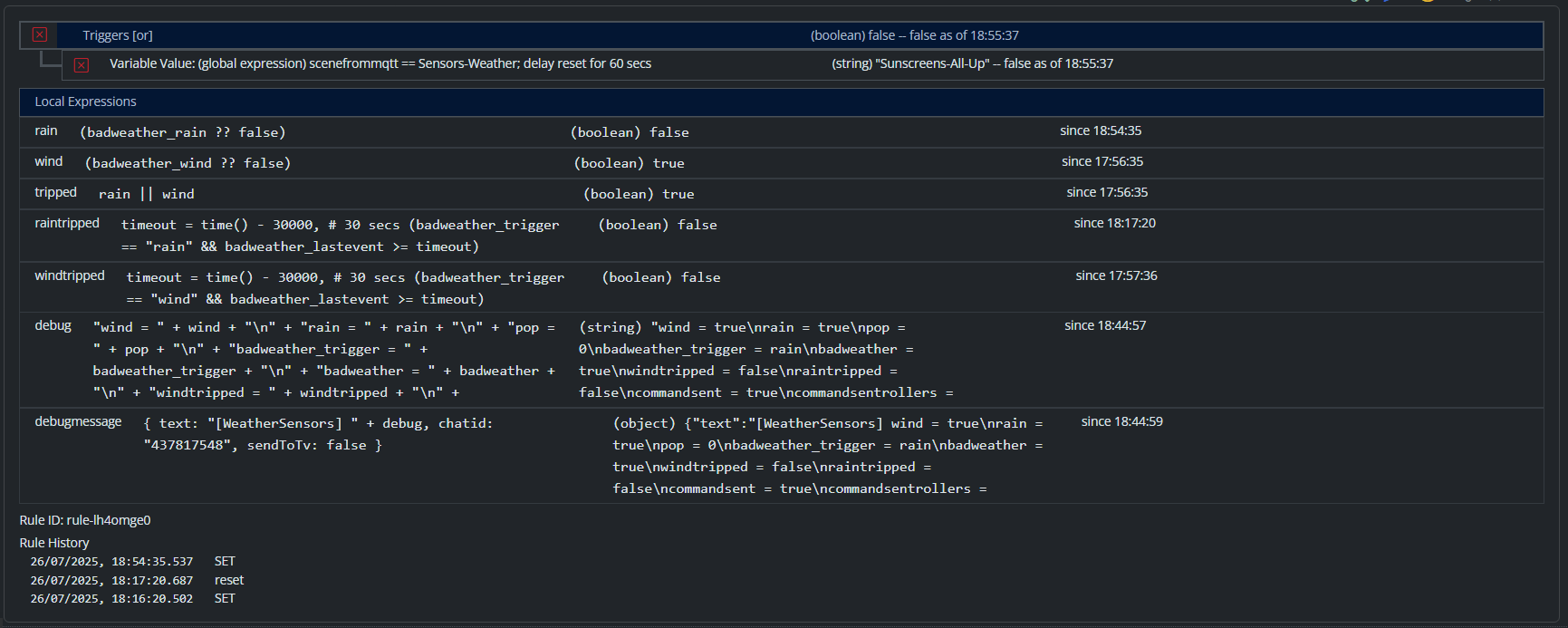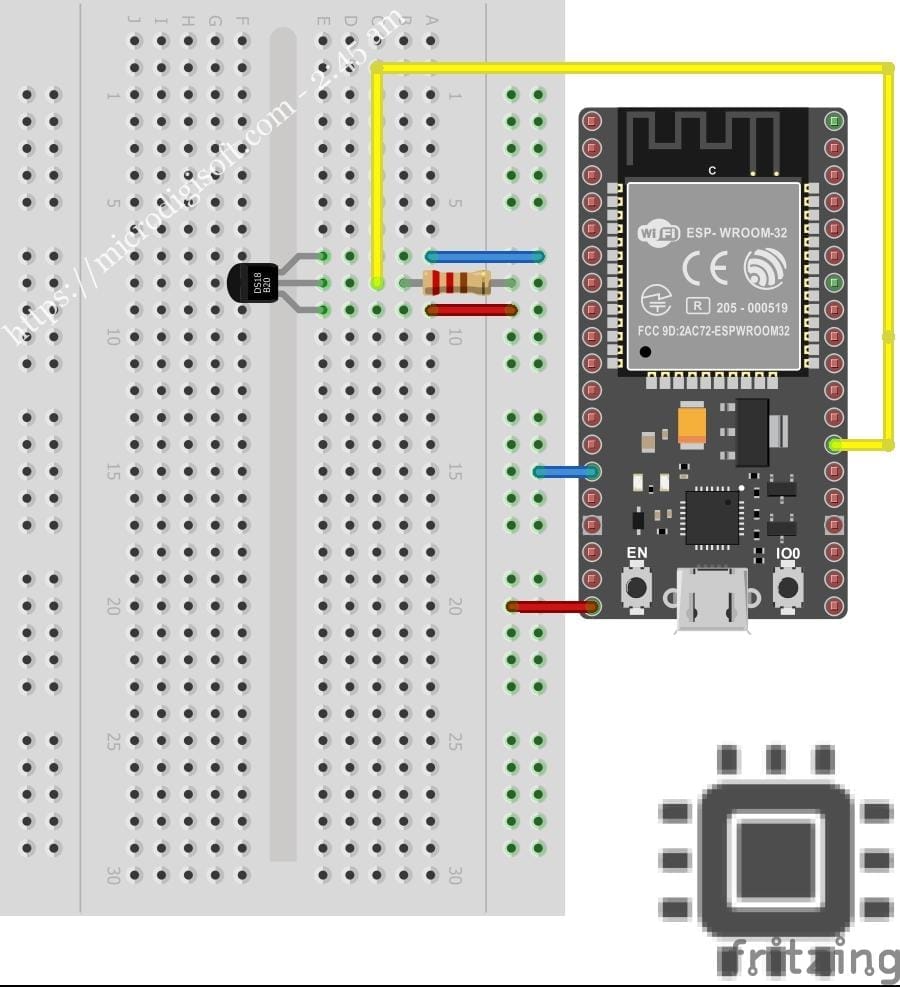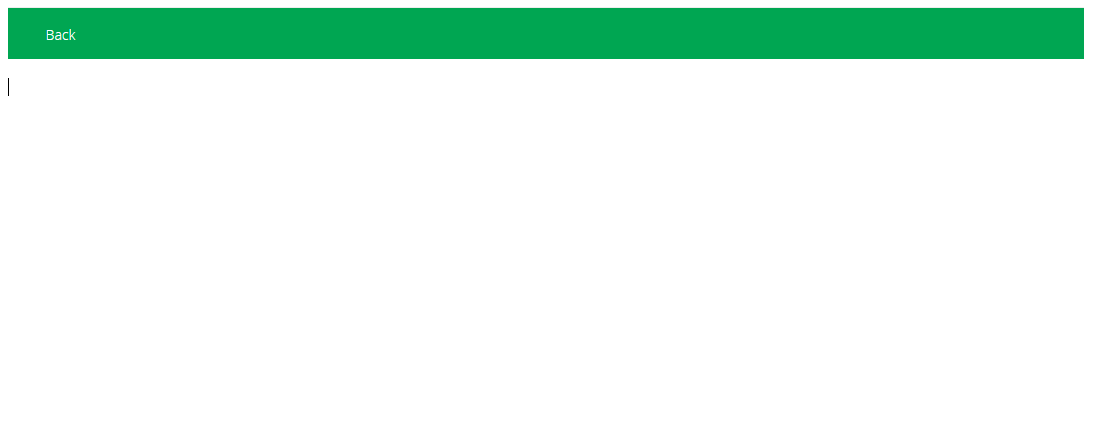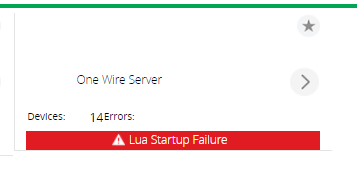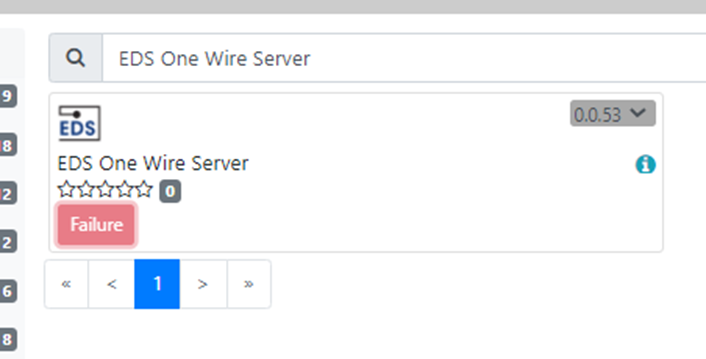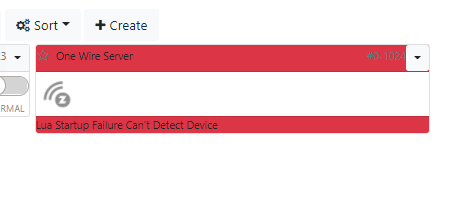OW-SERVER: 1-Wire to Ethernet Server - MSR Functionality
-
Could the temperature values be pulled into MSR from one of these devices: OW-SERVER: 1-Wire to Ethernet Server
Thanks.
@talisker They mention that their web interface uses "AJAX techniques" to update the page dynamically, which suggests there is an HTTP API (they don't say explicitly; it may just be undocumented but could be reverse engineered/guessed). So it seems possible, but you should get some detailed developer documentation out of them before purchase. If it has an HTTP API, you can get what you need through HTTP queries.
I've pondered doing an SNMP interface, but in a year of development you're the first person (I believe) to suggest a device for which SNMP would be a useful comms protocol. It's on my idea list, but not on my schedule.
-
@rogero thanks for the suggestion. Once upon a time I'd have had a go. I am also a little reluctant to dive into mqtt due to me never seeming to have enough time. However one of these days I might make the plunge.
@talisker if you use Tasmota, there's also an HTTP API you could call. That's true for ESPHome or Shelly as well.
Right now all my stuff is running thru MQTT (on my own homemade broker) and honestly, it's just fire and forget after the initial setup. MSR can also map MQTT entities quite easily.
-
In that case my suggestion for the ESP32 board seems easiest. Haven't been following the MQTT to MSR integration that Patrick is building, but I assume you could just publish the readings from the ESP32 to MSR directly. The ESP32 is about $10 and the google has lot's of examples of code.
-
There's a plugin for the OW-server that works great. Been using it for years.
-
My ESP32 board arrives today and I will be doing something very similar to what you are looking for. Will let you know how it goes. I have been using DS18B20's in RPI's for quite a while so this is first foray into ESP boards.
-
There's a plugin for the OW-server that works great. Been using it for years.
-
There's a plugin for the OW-server that works great. Been using it for years.
-
@talisker said in OW-SERVER: 1-Wire to Ethernet Server - MSR Functionality:
@a-lurker Does the Plugin work in U17?
Pretty sure it does - I'm using the plugin under openLuup but I used to have it running on a Vera.
@a-lurker I took the plunge and purchased an OW server (Ethernet). The system is up an running with my one wire connected devices. I am however having a little problem with the OWServer Vera app on my Vera Plus. On the face of it the app is working and picking up the one wire devices:
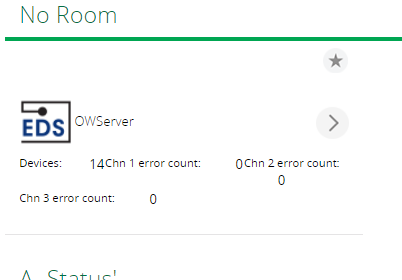
However, when I go into the 'Add Devices' menu there are none of the sensors shown - the page is blank:
I did a bit of googling and found the following information: https://github.com/dbemowsk/OW-SERVER_Emulator
I did try uploading the J_OWServer.js file as @dbemowsk suggested, but it did not solve the problem I have with vera not showing the one wire devices. I have no idea what he is explaining is the problem with the original files from the app store.
I appreciate that you don't have a Vera Plus, but if you could make any suggestions as to what to try I'd appreciate any input you can offer!
I guess that unless I get up an running I will need to find another route to pulling the values into MSR.
-
@a-lurker I took the plunge and purchased an OW server (Ethernet). The system is up an running with my one wire connected devices. I am however having a little problem with the OWServer Vera app on my Vera Plus. On the face of it the app is working and picking up the one wire devices:

However, when I go into the 'Add Devices' menu there are none of the sensors shown - the page is blank:
I did a bit of googling and found the following information: https://github.com/dbemowsk/OW-SERVER_Emulator
I did try uploading the J_OWServer.js file as @dbemowsk suggested, but it did not solve the problem I have with vera not showing the one wire devices. I have no idea what he is explaining is the problem with the original files from the app store.
I appreciate that you don't have a Vera Plus, but if you could make any suggestions as to what to try I'd appreciate any input you can offer!
I guess that unless I get up an running I will need to find another route to pulling the values into MSR.
Pretty sure you can get it to work. Use the most recent version of the plugin here. The plugin in the MIOS App Store is well out of date.
Your screen capture can be interpreted as the following - how many devices to you have attached?
Devices: 14 Chn 1 error count: 0 Chn 2 error count: 0 Chn 3 error count: 0 EDS OW server web pageYou need to do a few luup engine restarts to get the child devices to show up.
You can use AltUi to install the plugin from the Alt App Store: see More->AppStore. Not using AltUI? It's highly recommended.
If I remember correctly, all the one wire devices are created automatically on first run of the plugin. So on my dashboard it says "No new devices to add" as they have already been added.
"J_OWServer.js file as @dbemowsk suggested" - this bug has already been resolved in the plugin at the link above, so please use the J_OWServer.js file that comes with the Alt App store plugin.
Many of the plugins in the MIOS App Store are hopelessly out of date - refer to the Alt App store list. for updated versions.
All else fails; check the log - once again this can be seen using AltUi -> Misc -> OS Command --> Tail Logs
-
Pretty sure you can get it to work. Use the most recent version of the plugin here. The plugin in the MIOS App Store is well out of date.
Your screen capture can be interpreted as the following - how many devices to you have attached?
Devices: 14 Chn 1 error count: 0 Chn 2 error count: 0 Chn 3 error count: 0 EDS OW server web pageYou need to do a few luup engine restarts to get the child devices to show up.
You can use AltUi to install the plugin from the Alt App Store: see More->AppStore. Not using AltUI? It's highly recommended.
If I remember correctly, all the one wire devices are created automatically on first run of the plugin. So on my dashboard it says "No new devices to add" as they have already been added.
"J_OWServer.js file as @dbemowsk suggested" - this bug has already been resolved in the plugin at the link above, so please use the J_OWServer.js file that comes with the Alt App store plugin.
Many of the plugins in the MIOS App Store are hopelessly out of date - refer to the Alt App store list. for updated versions.
All else fails; check the log - once again this can be seen using AltUi -> Misc -> OS Command --> Tail Logs
@a-lurker said in OW-SERVER: 1-Wire to Ethernet Server - MSR Functionality:
Pretty sure you can get it to work. Use the most recent version of the plugin here. The plugin in the MIOS App Store is well out of date.
Noted. I rolled back to my vera backup prior to my attempts yesterday. I then downloaded the files from the github link and loaded into my vera.
I had to set up the OW Server device manually (troubles with ALTUI - see below).Your screen capture can be interpreted as the following - how many devices to you have attached?
Devices: 14 Chn 1 error count: 0 Chn 2 error count: 0 Chn 3 error count: 0 EDS OW server web pageI get the following now:
You can see that it does not show the three channels now, but it confirms that I have fourteen devices (which is correct).
You need to do a few luup engine restarts to get the child devices to show up.
I have done numerous Luup engine restarts, but the devices still do not show up in 'Add Devices'.
You can use AltUi to install the plugin from the Alt App Store: see More->AppStore. Not using AltUI? It's highly recommended.
I did install ALTUI, but I was not able to install OW-Server using it. The first time I pressed the install button it thought about it for a few seconds but did not install the OW Server device. Now when I press it I get an error:
If I remember correctly, all the one wire devices are created automatically on first run of the plugin. So on my dashboard it says "No new devices to add" as they have already been added.
The have not been created, possibly because there is an error.....
"J_OWServer.js file as @dbemowsk suggested" - this bug has already been resolved in the plugin at the link above, so please use the J_OWServer.js file that comes with the Alt App store plugin.
Many of the plugins in the MIOS App Store are hopelessly out of date - refer to the Alt App store list. for updated versions.
All else fails; check the log - once again this can be seen using AltUi -> Misc -> OS Command --> Tail Logs
I get the following error in the Alturi app (similar in the vera UI) and Vera log:
You can see from the vera log (http://192.168.68.103/cgi-bin/cmh/log.sh?Device=LuaUPnP) the requisite jasn.lua library file cannot be found. Now I am hoping this is all I need (deposited in the right place in vera) to get the OW Server device up an running. So, where do I get this file and where do I put it (please be polite!!).![768cd707-8727-4ce9-a06e-717661411e31-image.png]
-
@a-lurker said in OW-SERVER: 1-Wire to Ethernet Server - MSR Functionality:
Pretty sure you can get it to work. Use the most recent version of the plugin here. The plugin in the MIOS App Store is well out of date.
Noted. I rolled back to my vera backup prior to my attempts yesterday. I then downloaded the files from the github link and loaded into my vera.
I had to set up the OW Server device manually (troubles with ALTUI - see below).Your screen capture can be interpreted as the following - how many devices to you have attached?
Devices: 14 Chn 1 error count: 0 Chn 2 error count: 0 Chn 3 error count: 0 EDS OW server web pageI get the following now:
You can see that it does not show the three channels now, but it confirms that I have fourteen devices (which is correct).
You need to do a few luup engine restarts to get the child devices to show up.
I have done numerous Luup engine restarts, but the devices still do not show up in 'Add Devices'.
You can use AltUi to install the plugin from the Alt App Store: see More->AppStore. Not using AltUI? It's highly recommended.
I did install ALTUI, but I was not able to install OW-Server using it. The first time I pressed the install button it thought about it for a few seconds but did not install the OW Server device. Now when I press it I get an error:
If I remember correctly, all the one wire devices are created automatically on first run of the plugin. So on my dashboard it says "No new devices to add" as they have already been added.
The have not been created, possibly because there is an error.....
"J_OWServer.js file as @dbemowsk suggested" - this bug has already been resolved in the plugin at the link above, so please use the J_OWServer.js file that comes with the Alt App store plugin.
Many of the plugins in the MIOS App Store are hopelessly out of date - refer to the Alt App store list. for updated versions.
All else fails; check the log - once again this can be seen using AltUi -> Misc -> OS Command --> Tail Logs
I get the following error in the Alturi app (similar in the vera UI) and Vera log:
You can see from the vera log (http://192.168.68.103/cgi-bin/cmh/log.sh?Device=LuaUPnP) the requisite jasn.lua library file cannot be found. Now I am hoping this is all I need (deposited in the right place in vera) to get the OW Server device up an running. So, where do I get this file and where do I put it (please be polite!!).![768cd707-8727-4ce9-a06e-717661411e31-image.png]
Looking at the log it says its missing json.lua. This message tells me you are still running the old plugin from the MIOS store.
Not sure what hardware you are using? The old Vera 3 can't access the Alt App store as the comms library is too antiquated. Regardless you can just download the files from GitHub and overwrite the mios ones. Use the Vera user interface (ie not directly with SSH) as Vera compresses the files when you upload them via the UI. In Vera 3 they end up in etc\cmh-ludl as "lzo" files
The latest version of the plugin looks for ten different possibly available json libraries - see this GitHub link.
If you look in (a Vera 3) /usr/lib/lua you may find dkjson.lua, which in this case is a sym link to /mios/usr/lib/lua/dkjson.lua
You can use the command in AltUI --> Misc --> OsCommand -->Find Json to see what might be available to you. Note that this search doesn't always find what's available. But I would expect dkjson.lua is available and will be found and used by the latest version of the plugin.

